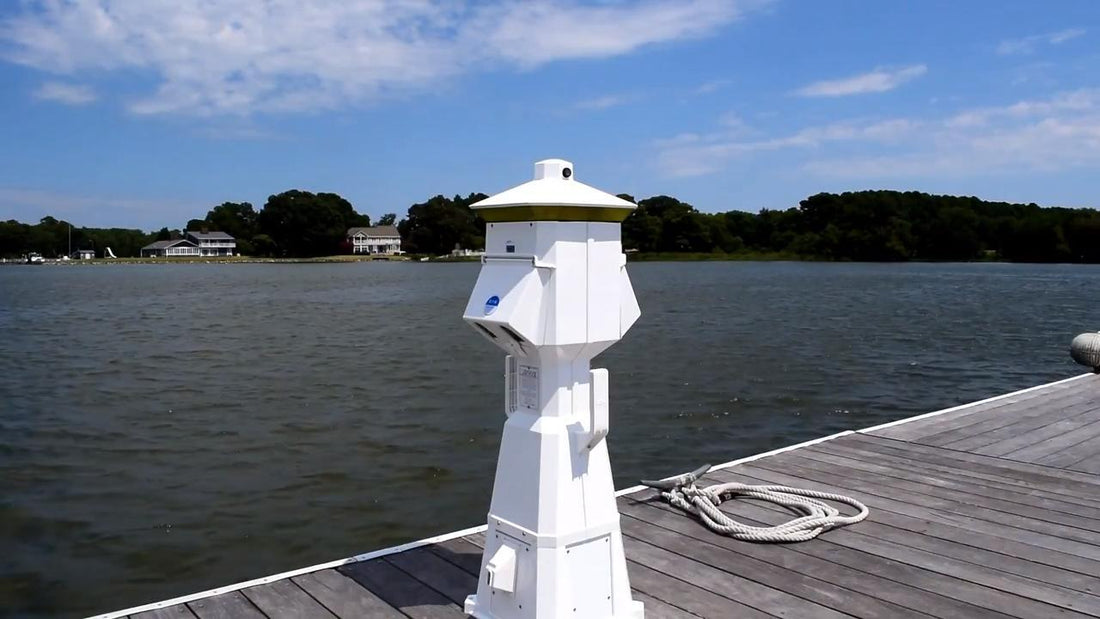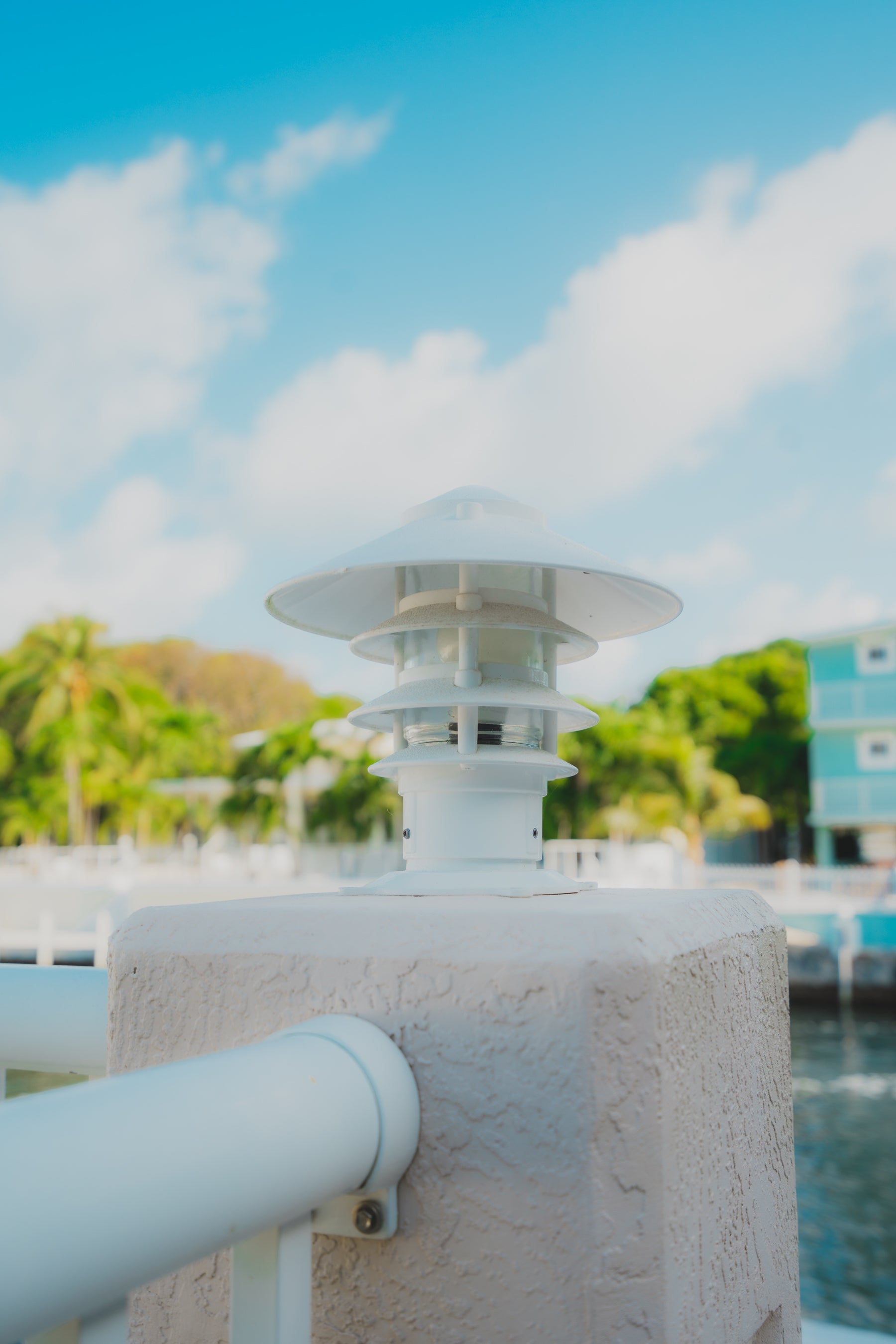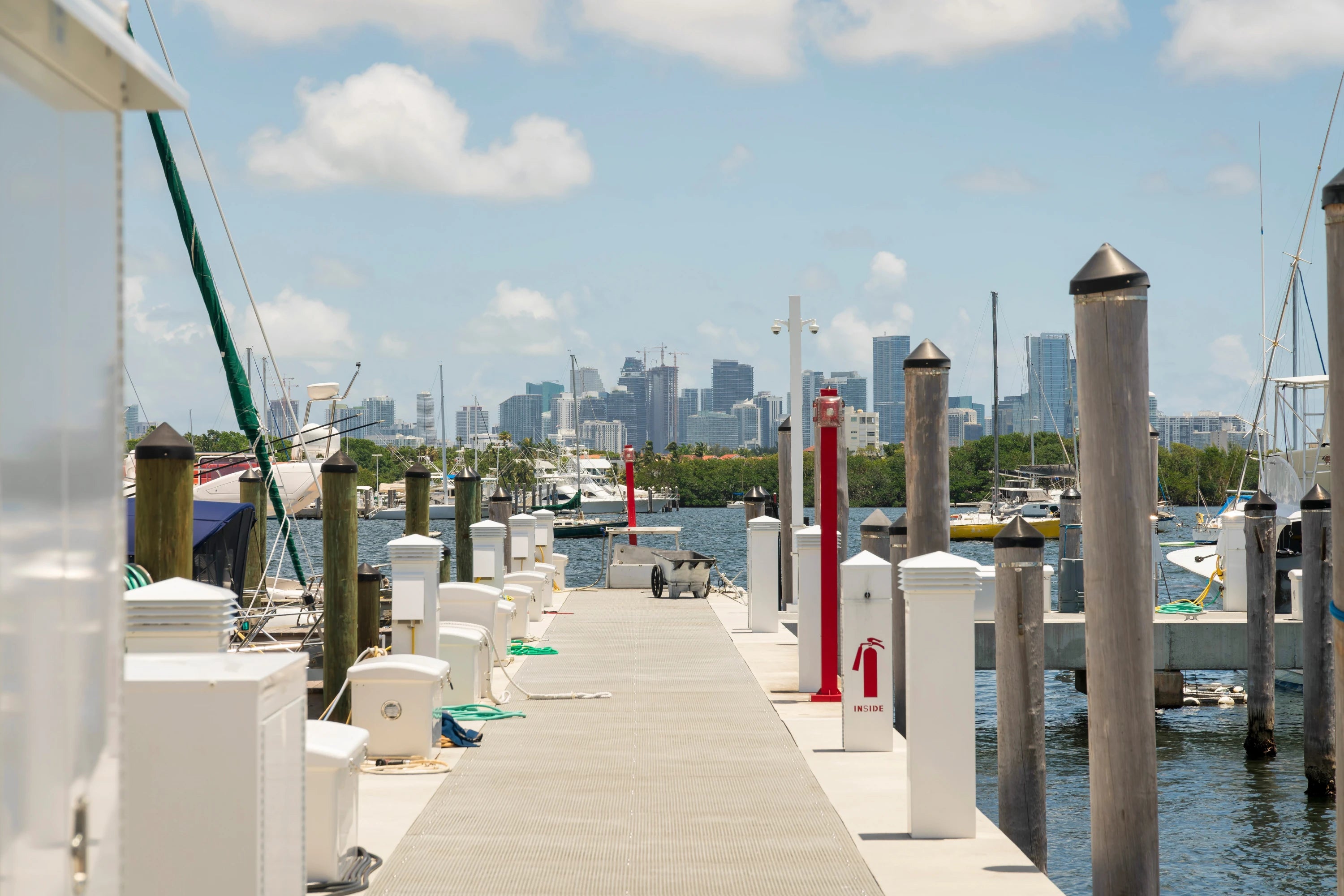
Marine Shore Power Basics: A Boater's Guide
Share
Whether you're preparing for an extended stay at the marina or simply looking to keep your onboard systems running, understanding marine shore power is essential. With a power pedestal connection, you can run electrical appliances, charge batteries, and keep systems operational without relying on your boat's engine or generator.
Learn about the ins and outs of shore power, including how it works, the different shore power plug types, and best practices for using it safely in this post.
What Is Shore Power?
The term "shore power" is commonly used for marine and RV applications, but in the boating world, it’s a lifeline that helps keep everything running while you're docked.
At its most basic level, shore power refers to the electrical connection between your boat and a dock-based power source. When you're at the marina or port, instead of using your boat's engine or generator to power onboard systems, you can connect to a power pedestal or outlet on the dock to draw electricity. This allows you to run appliances, charge batteries, and maintain electrical systems without burning fuel or causing engine wear.
How Does Shore Power Work?
Here's a little science lesson on how shore power works! At its core, the process is relatively straightforward.
Connection
You use a shore power cable or power cord to connect your boat's electrical system to a power pedestal on the dock. The cable has specific plugs and connections at each end designed for your boat and the dock's power source.
Voltage Matching
Marine shore power systems typically supply either 120V or 240V AC power, depending on the boat’s needs. The boat’s onboard electrical system must match the voltage and frequency of the dock’s supply. Most marinas provide both 30-amp and 50-amp service, so it’s essential to use the correct cable and adapters.
Circuit Breakers
To ensure safety, both the dock and your boat are equipped with circuit breakers. These prevent electrical overloads and protect the system from short circuits, which can cause damage to the equipment or start fires.
Electrical Distribution
Once connected, the shore power feeds into your boat’s electrical panel. From there, it is distributed to power the boat’s systems, including lighting, refrigeration, air conditioning, and battery chargers.
Understanding the nuances of shore power is key to using it efficiently and safely, especially in harsh marine environments where moisture, corrosion, and fluctuating power demands can complicate things.
Common Shore Power Plug Types and Functions
One of the most confusing aspects of marine shore power for new boaters is understanding the different shore power plug types and how they match your boat’s requirements.
30-Amp Plugs
- Voltage: 120V
- Common Use: Small to mid-sized boats
- Connector Type: NEMA L5-30
- Max Power: 3,600 watts
Most boats up to 35 feet in length use a 30-amp shore power connection, which can power basic systems like lights, fans, battery chargers, and small appliances. The 30-amp plug has three prongs and is designed to connect with a dock power pedestal that supplies 120V AC power.
50-Amp Plugs
- Voltage: 240V or 120V (split-phase)
- Common Use: Larger boats and yachts
- Connector Type: NEMA SS-2 or NEMA L14-50
- Max Power: 12,000 watts
For larger vessels, a 50-amp shore power system provides much more power, especially if you need to have auxiliary engines or run multiple high-demand appliances like air conditioning, heaters, or galley equipment. 50-amp plugs often provide both 120V and 240V service, making them versatile for boats with more complex electrical needs.
Dual 30-Amp Plugs
- Voltage: 240V (by combining two 30-amp circuits)
- Common Use: Boats that require more power than a single 30-amp circuit can provide but don’t need the full 50-amp service.
Some boats are set up to use two 30-amp plugs combined to create a 240V service. In this case, you’ll need a special adapter to split the load between two 30-amp pedestals.
International Plugs
This is exactly what you think it is: for those who are planning to dock in foreign ports, it's essential to understand the shore power standards and plug types used in those regions. Europe, for example, often uses 220V systems with different plug configurations.
Before setting sail internationally, make sure you have the proper adapters to connect to local shore power systems. Failure to do so could damage equipment or result in an inadequate power supply.
Safety Considerations for Shore Power
Using shore power comes with several safety considerations. Without proper care, electrical systems can pose risks to your boat and crew. Here are some safety tips to keep in mind:
Inspect Your Shore Power Cords Regularly
Make sure your shore power cords are free from wear, fraying, or corrosion. Damaged cords can result in electrical shorts or fires without a secure waterproof seal, so replace any cables that show signs of wear.
Avoid Overloading Circuits
Understand your boat's electrical load and ensure you're not exceeding the capacity of the shore power system. Running too many high-wattage, heavy-duty appliances at once can cause the electrical grid or circuit breaker to trip or, worse, lead to overheating and fire hazards.
Use Proper Adapters
If you're connecting to a shore power pedestal with different plug types, always use certified adapters to match your boat’s requirements. Never force incompatible plugs together, which can lead to serious electrical malfunctions.
Ground Fault Protection
Marinas are required to have ground fault protection on their shore power systems to prevent electrical leaks into the water. Ensure that your boat's shoreside electrical power system is equipped with ground fault protection devices (GFPDs) to keep everyone safe while your vessel is docked.
How to Maximize Your Marine Shore Power Setup
Upgrading or optimizing your marine shower power setup doesn't have to be complicated. At Haven Dock & Marine, we can make plenty of product recommendations to make sure you've got a reliable power system equipped to handle your needs! Here are a few suggestions.
Monitor Your Power Usage
Using a power management system allows you to monitor how much electricity you're using at any given time. This helps prevent overloads and ensures you're running your boat’s systems efficiently.
Upgrade Your Shore Power Cord
If you’re dealing with power fluctuations or inefficiencies, consider upgrading to a thicker, better-insulated shore power cord. This can help reduce voltage drops and provide a more stable power supply.
Invest in a High-Quality Power Pedestal
Most importantly, a reliable and durable power pedestal is essential for any shore power system. These pedestals offer secure outlets, circuit breakers, and sometimes additional features like water hookups.
Haven Dock & Marine is proud to carry a full line of Eaton power pedestals to bring you all the amenities of modern living while enjoying life on your boat. They are attractive, durable, and packed with features to make staying connected easier. From our conservatively-sized Hatteras model for small spaces to our popular Lighthouse pedestal with all the bells and whistles, choose from our many top-quality power pedestal options that meet all marine standards.
Choose Haven Dock & Marine for All Your Marine Solutions
Don’t wait until you're facing power issues—be proactive and equip your boat with the best shore power systems available today. At Haven Dock & Marine, we specialize in providing high-quality marine equipment, including power pedestals, shore power cords, and other essential accessories.
We understand the importance of dependable power sources on the water, and our products are designed to withstand the harsh marine environment with the highest durability, safety, and reliability—ensuring that your boat stays put, stays powered, or stays reliable no matter where you dock.
Shop our online catalog for our wide range of shore power solutions, dock accessories, and marine products for your boat—or give us a call, and we'll help you pick out just the right item! Happy sailing.


